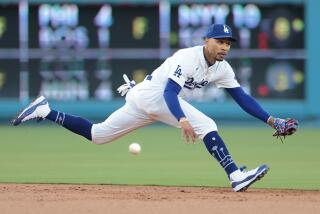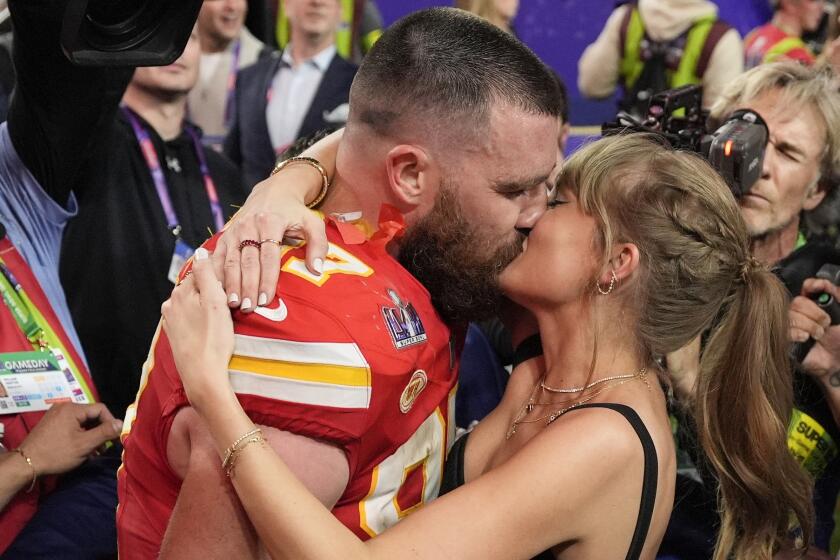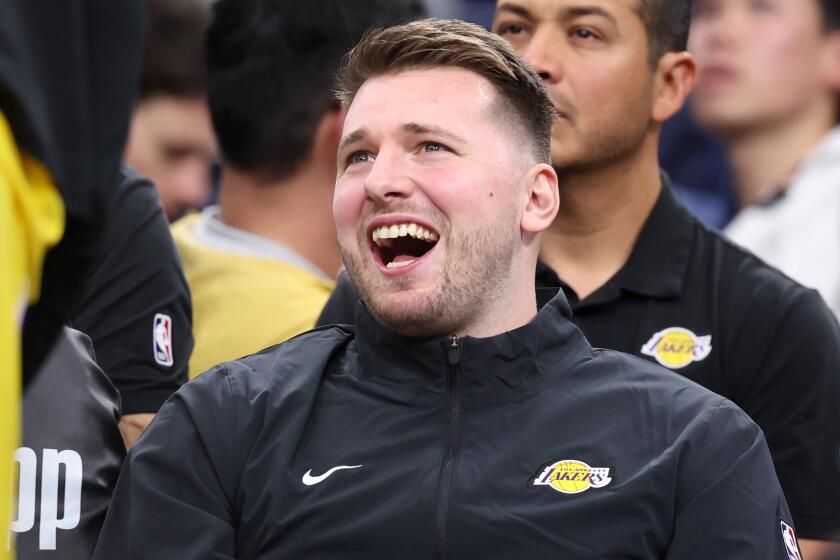Mookie Wilson Is a Name to Remember in History of Mets
- Share via
NEW YORK — At the New York Mets’ first game at the Polo Grounds in their inaugural season of 1962, they were greeted by a banner heralding a rookie infielder whose headfirst style of play and engaging personality had enchanted the New York media during spring training. When someone marveled that a player of Rod Kanehl’s stature should be so honored, he was undeterred. “My fame,” he decided, “preceded me.”
So it was with Mookie Wilson. He wasn’t brash in the manner of Kanehl but he was a celebrity at Shea Stadium before he played his first game in Flushing. Long before. To this day, I recall the latter part of a bedsheet paraded on a Banner Day before Wilson’s arrival in September, 1980. It contended that the club would rise from the ashes “... by Mook or by Crook.”
Right off the bat, the man had two things in his favor. One was the condition of the franchise, so dismal that the club was promoting its minor-league prospects in the absence of major-league stars. The other was a colorful nickname conferred on William Hayward Wilson by his grandparents. “You don’t forget the name they provided,” he once said.
In time, he gave people cause to remember him for more than his moniker. He became the catalyst on a team whose progress in the early years of a new administration wasn’t reflected in the standings. Wearing No.1 on his back, he was No.1 in the batting order from the first day of the 1981 season. The fact that the Mets finished in the vicinity of the basement was more a reflection on the pitching staff and the people who followed him to the plate. They were, in order, Frank Taveras, Lee Mazzilli, Dave Kingman, Rusty Staub, Alex Trevino, Hubie Brooks and Doug Flynn.
Wilson rose above the supporting cast. He could run down a fly ball, he would hit triples and the odd home run, and he raised havoc on the basepaths. He finished seventh in Rookie of the Year voting but became, as more than one headline writer noted, Mookie of the Year in New York.
During his first three seasons in the National League, he was the team’s most dependable offensive weapon. Not only did he lead the Mets in hits, stolen bases and runs scored but, more than any of his teammates, he was likely to disrupt the opposition. Mookie was exciting. In 1983, with the Mets again headed for the oblivion of a sixth-place finish, Wilson scored the winning run from second base on a potential double-play grounder. In fact, he did it twice, and within a span of 96 hours.
The arrival of Keith Hernandez, the blossoming of Darryl Strawberry and the rise of the team to pennant contention under Davey Johnson in 1984 lessened Wilson’s impact. He didn’t have to run so much because the Mets suddenly were capable of a big inning. Injuries to his shoulder in 1985 and to his eye in 1986 set him back and by the time he was fully healed, he found himself a platoon player, sharing centerfield with Lenny Dykstra and filling in elsewhere.
Although unhappy with the situation, he made the best of it. He was as responsible as anyone for the strong finish that carried the Mets to a division title last year, batting .385 over the last two months. And, of course, he was the author of the most famous at-bat in the history of the franchise, at a time when the Mets were down to their last out in the 1986 World Series.
He was never an All-Star, yet it’s conceivable Wilson will be as fondly remembered as anyone who wore the uniform. As long as they replay that Series, particularly the unforgettable sixth game, Wilson will remain a popular figure in franchise history. Indeed, even as the trade that sent him to Toronto was being finalized, Mets telecasts were trumpeting a forthcoming promotion -- Magical Moment Night -- in which posters of Wilson’s ground ball squirting through Bill Buckner’s legs will be distributed to fans. On that night, Aug. 10, Wilson will be in Kansas City with the Blue Jays but he certainly won’t be forgotten.
Those games against Boston illustrated the nature of the ballplayer. But it was a side effect of the Series that demonstrated the depth of the person. Racial tensions at the University of Massachusetts, apparently simmering below the surface for some time, boiled over during the Mets’ stunning comeback. Wilson journeyed to Amherst on behalf of the Mets (Marty Barrett represented the Red Sox) and preached tolerance to a large group of students, citing his own experience growing up.
It was typical of the man, who cared what happened beyond the confines of the clubhouse. He had his own foundation for troubled high school girls near his hometown in New Jersey and gave more than his time to other charities and to community service. Joe McIlvaine, the Mets’ official who consummated the trade on Monday in advance of the Frank Viola deal, was speaking from the heart when he called Wilson “the finest individual personally and professionally that we have ever had in the organization.”
He was a good man, a positive influence not only on the team but on those whose lives he touched. They included the next generation, the audience for “Sesame Street,” where he appeared in a currently syndicated episode alongside Hernandez and the Count. As ever, whether in the company of ballplayers, children or even puppets, Mookie was among friends.
More to Read
Go beyond the scoreboard
Get the latest on L.A.'s teams in the daily Sports Report newsletter.
You may occasionally receive promotional content from the Los Angeles Times.










